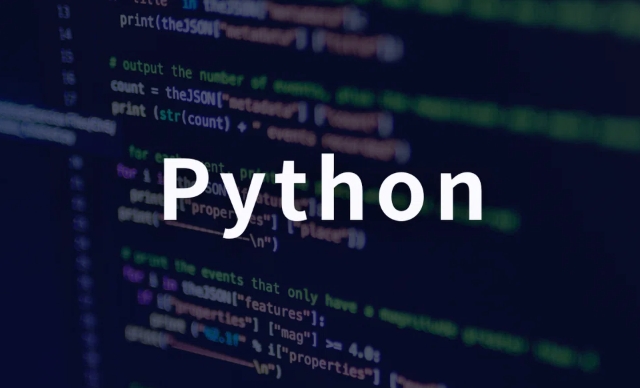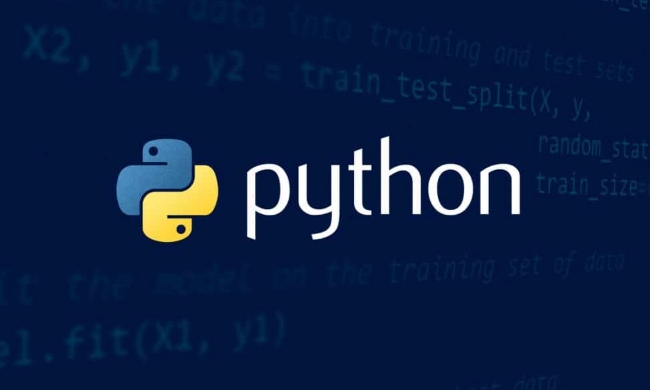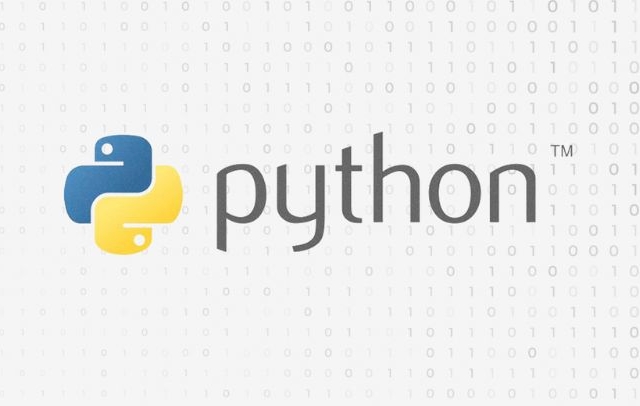Python decorators are essentially function wrappers, used to modify functions or class behaviors without changing the source code. 1. A decorator is a function that receives a function or class as an argument, returning the wrapped version, for example, using the @decorator syntax is equivalent to func = decorator(func); 2. The wrapper function should use args and *kwargs to receive any parameters, and return the original function execution result to retain the return value; 3. Multi-layer decorator is executed in the order from bottom to top, that is, the decorator closest to the function is run first; 4. Classes can also be used as decorators, and the call method needs to be implemented, suitable for complex scenarios where states need to be saved. After understanding these mechanisms, the decorator will become intuitive and practical.

Python's decorator syntax and usage seem a bit confusing, but after understanding the mechanism, you will find that it is very practical. Its core role is to modify the behavior of functions or classes without modifying their source code. This is especially useful when writing frameworks, tool functions, or uniformly handling certain logic.

The essence of a decorator: function wrapping
A decorator is essentially a function that wraps another function or class. You can think of it as adding an extra layer of functionality to it without changing the original function.
For example, the following simple example:

def my_decorator(func):
def wrapper():
print("Before function call")
func()
print("After function call")
Return wrapper
@my_decorator
def says_hello():
print("Hello")
say_hello() In this code, @my_decorator is how to use the decorator. It is equivalent to:
say_hello = my_decorator(say_hello)
That is, pass the say_hello function to my_decorator , and then return a new function and assign it to say_hello . This way, the packaged version is executed when calling.

How to deal with decorators with parameters?
If the decorated function has parameters, the wrapper function in the decorator must also be able to receive these parameters. The easiest way is to use *args and **kwargs to wildly assign all parameters.
For example:
def decorator_with_args(func):
def wrapper(*args, **kwargs):
print("Arguments:", args, kwargs)
return func(*args, **kwargs)
Return wrapper
@decorator_with_args
def greet(name, age):
print(f"Hi {name}, you are {age}")
greet("Alice", 25)At this time the wrapper function can handle any parameters. A few points to remember:
- The wrapper function needs to return the result of func(...) , otherwise the return value of the original function will be discarded
- If the original function has a return value, don't forget to return from the wrapper
- The parameters can be diverse, but using
*argsand**kwargsis the most common method.
The order of multi-layer decorators
You can overlay multiple decorators on a function, but be aware that their execution order is run from bottom to top (or from inside to outside).
For example:
def deco1(func):
def wrapper(*args, **kwargs):
print("deco1 before")
result = func(*args, **kwargs)
print("deco1 after")
return result
Return wrapper
def deco2(func):
def wrapper(*args, **kwargs):
print("deco2 before")
result = func(*args, **kwargs)
print("deco2 after")
return result
Return wrapper
@deco1
@deco2
def says_hi():
print("Hi")
say_hi()The output order is:
deco1 before deco2 before Hi deco2 after deco1 after
So the order of the decorators will affect the final behavior. If you want to execute a certain logic first, pay attention to the order in which the decorator is written.
Classes can also be used as decorators
In addition to functions, you can also use classes to implement decorators. This practice is usually used in situations where state is required.
class MyDecorator:
def __init__(self, func):
self.func = func
def __call__(self, *args, **kwargs):
print("Class decorator before")
result = self.func(*args, **kwargs)
print("Class decorator after")
return result
@MyDecorator
def do_something():
print("Doing something")
do_something() The key point here is to let the class implement the __call__ method so that the instance can be called like a function. This method is suitable for more complex scenarios, such as if you want to record the number of calls, cache the results, etc.
Basically that's it. Decorators look fancy, but essentially function wrapping and replacement. As long as you understand this mechanism and add some exercises, you can use it flexibly.
The above is the detailed content of Understanding Python decorators syntax and usage. For more information, please follow other related articles on the PHP Chinese website!

Hot AI Tools

Undress AI Tool
Undress images for free

Undresser.AI Undress
AI-powered app for creating realistic nude photos

AI Clothes Remover
Online AI tool for removing clothes from photos.

Clothoff.io
AI clothes remover

Video Face Swap
Swap faces in any video effortlessly with our completely free AI face swap tool!

Hot Article

Hot Tools

Notepad++7.3.1
Easy-to-use and free code editor

SublimeText3 Chinese version
Chinese version, very easy to use

Zend Studio 13.0.1
Powerful PHP integrated development environment

Dreamweaver CS6
Visual web development tools

SublimeText3 Mac version
God-level code editing software (SublimeText3)

Hot Topics
 Polymorphism in python classes
Jul 05, 2025 am 02:58 AM
Polymorphism in python classes
Jul 05, 2025 am 02:58 AM
Polymorphism is a core concept in Python object-oriented programming, referring to "one interface, multiple implementations", allowing for unified processing of different types of objects. 1. Polymorphism is implemented through method rewriting. Subclasses can redefine parent class methods. For example, the spoke() method of Animal class has different implementations in Dog and Cat subclasses. 2. The practical uses of polymorphism include simplifying the code structure and enhancing scalability, such as calling the draw() method uniformly in the graphical drawing program, or handling the common behavior of different characters in game development. 3. Python implementation polymorphism needs to satisfy: the parent class defines a method, and the child class overrides the method, but does not require inheritance of the same parent class. As long as the object implements the same method, this is called the "duck type". 4. Things to note include the maintenance
 Python Function Arguments and Parameters
Jul 04, 2025 am 03:26 AM
Python Function Arguments and Parameters
Jul 04, 2025 am 03:26 AM
Parameters are placeholders when defining a function, while arguments are specific values ??passed in when calling. 1. Position parameters need to be passed in order, and incorrect order will lead to errors in the result; 2. Keyword parameters are specified by parameter names, which can change the order and improve readability; 3. Default parameter values ??are assigned when defined to avoid duplicate code, but variable objects should be avoided as default values; 4. args and *kwargs can handle uncertain number of parameters and are suitable for general interfaces or decorators, but should be used with caution to maintain readability.
 Explain Python generators and iterators.
Jul 05, 2025 am 02:55 AM
Explain Python generators and iterators.
Jul 05, 2025 am 02:55 AM
Iterators are objects that implement __iter__() and __next__() methods. The generator is a simplified version of iterators, which automatically implement these methods through the yield keyword. 1. The iterator returns an element every time he calls next() and throws a StopIteration exception when there are no more elements. 2. The generator uses function definition to generate data on demand, saving memory and supporting infinite sequences. 3. Use iterators when processing existing sets, use a generator when dynamically generating big data or lazy evaluation, such as loading line by line when reading large files. Note: Iterable objects such as lists are not iterators. They need to be recreated after the iterator reaches its end, and the generator can only traverse it once.
 Python `@classmethod` decorator explained
Jul 04, 2025 am 03:26 AM
Python `@classmethod` decorator explained
Jul 04, 2025 am 03:26 AM
A class method is a method defined in Python through the @classmethod decorator. Its first parameter is the class itself (cls), which is used to access or modify the class state. It can be called through a class or instance, which affects the entire class rather than a specific instance; for example, in the Person class, the show_count() method counts the number of objects created; when defining a class method, you need to use the @classmethod decorator and name the first parameter cls, such as the change_var(new_value) method to modify class variables; the class method is different from the instance method (self parameter) and static method (no automatic parameters), and is suitable for factory methods, alternative constructors, and management of class variables. Common uses include:
 How to handle API authentication in Python
Jul 13, 2025 am 02:22 AM
How to handle API authentication in Python
Jul 13, 2025 am 02:22 AM
The key to dealing with API authentication is to understand and use the authentication method correctly. 1. APIKey is the simplest authentication method, usually placed in the request header or URL parameters; 2. BasicAuth uses username and password for Base64 encoding transmission, which is suitable for internal systems; 3. OAuth2 needs to obtain the token first through client_id and client_secret, and then bring the BearerToken in the request header; 4. In order to deal with the token expiration, the token management class can be encapsulated and automatically refreshed the token; in short, selecting the appropriate method according to the document and safely storing the key information is the key.
 What are Python magic methods or dunder methods?
Jul 04, 2025 am 03:20 AM
What are Python magic methods or dunder methods?
Jul 04, 2025 am 03:20 AM
Python's magicmethods (or dunder methods) are special methods used to define the behavior of objects, which start and end with a double underscore. 1. They enable objects to respond to built-in operations, such as addition, comparison, string representation, etc.; 2. Common use cases include object initialization and representation (__init__, __repr__, __str__), arithmetic operations (__add__, __sub__, __mul__) and comparison operations (__eq__, ___lt__); 3. When using it, make sure that their behavior meets expectations. For example, __repr__ should return expressions of refactorable objects, and arithmetic methods should return new instances; 4. Overuse or confusing things should be avoided.
 How does Python memory management work?
Jul 04, 2025 am 03:26 AM
How does Python memory management work?
Jul 04, 2025 am 03:26 AM
Pythonmanagesmemoryautomaticallyusingreferencecountingandagarbagecollector.Referencecountingtrackshowmanyvariablesrefertoanobject,andwhenthecountreacheszero,thememoryisfreed.However,itcannothandlecircularreferences,wheretwoobjectsrefertoeachotherbuta
 Describe Python garbage collection in Python.
Jul 03, 2025 am 02:07 AM
Describe Python garbage collection in Python.
Jul 03, 2025 am 02:07 AM
Python's garbage collection mechanism automatically manages memory through reference counting and periodic garbage collection. Its core method is reference counting, which immediately releases memory when the number of references of an object is zero; but it cannot handle circular references, so a garbage collection module (gc) is introduced to detect and clean the loop. Garbage collection is usually triggered when the reference count decreases during program operation, the allocation and release difference exceeds the threshold, or when gc.collect() is called manually. Users can turn off automatic recycling through gc.disable(), manually execute gc.collect(), and adjust thresholds to achieve control through gc.set_threshold(). Not all objects participate in loop recycling. If objects that do not contain references are processed by reference counting, it is built-in






